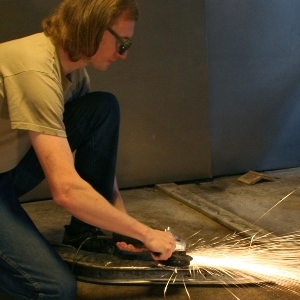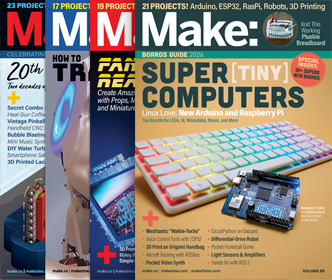Direct Granules Extruder
By Norbert Heinz
A drop in replacement extruder for common 3D printers that can process recycled plastics or brittle materials such as sugar
Type: Commercial, Social Impact, Education
Website: https://homofaciens.de/technics-machines-3D-printer-Granule-Extruder-V3_en.htm
What inspired you or what is the idea that got you started?
FDM 3D printers use plastic wire (filament) as raw material that is made from industrial pellets (granules). My idea is to skip the plastic wire and use granules directly for 3D printing.
I was inspired by the growing heap of failed prints in my workshop. From the beginning of my 3D history I started collecting that scrap. Also the tower of empty plastic spools, the filament is delivered on, somehow scared me.
Simply speaking, an extruder is just a tube with a screw inside, whose tip is heated. Not a big deal to make it work - my initial thoughts ;-)
What is your project about and how does it work?
Existing direct extruders use a large auger and a very strong, heavy motor. The designs are close to commercial extruders, used to produce plastic filament. These designs are not really suitable to control the flow of plastic on a small scale.
To get it all work better, my approach is different in four things:
(1) I use smaller granules (<2mm) as raw material
(2) The "auger" in my design is clearly smaller so that
(3) a normal (rather weak) stepper motor can operate the extruder
(4) and due to the compact dimensions the heating power required is close to that of filament printers.
To get waste prints recycled, I use a commercial blender and a DIY sieve to get granules smaller 2mm. These granules are then pushed through an extruder that uses a simple wood screw as an auger. Not because I could not effort a commercial auger, but because these have a better "transmission" (=lower pitch).
What did you learn by doing this project?
To make my extruder work, I had to study what is exactly going on inside of it. A good temperature management is needed to create a good extruder rather than forcing the material somehow through a nozzle with a brutally strong motor and lots of heating / cooling power.
I have also learned and demonstrated, that the design can process sugar: https://youtu.be/ea2dfdTszqM.
There is a lot I have learned about heat conduction, friction and thermal management on the extruder design and about grinding thermoplastics to get raw material.
I am still learning, my extruder design version 4 is already working, with major improvements, but the documentation has not yet been recorded...
What impact does your project have on others as well as yourself?
The least impact is that the heap of failed prints in my workshop is shrinking noticeably since my prototypes are working, now.
Well, if that happens in more tinkerer garages, that could have at least a small impact on the size of landfills.
Using granules directly instead of going through transforming it into plastic wire before it is fed into a 3D printer, that will also have an impact on waste (no plastic filament spools needed).
It will also make 3D printing cheaper: Plastic pellets are clearly cheaper to source than filament,
Raw materials that are too brittle to be processed as filament, can now be 3D printed (as demonstrated with sugar).
Experiments with low melting metal alloys will follow.






